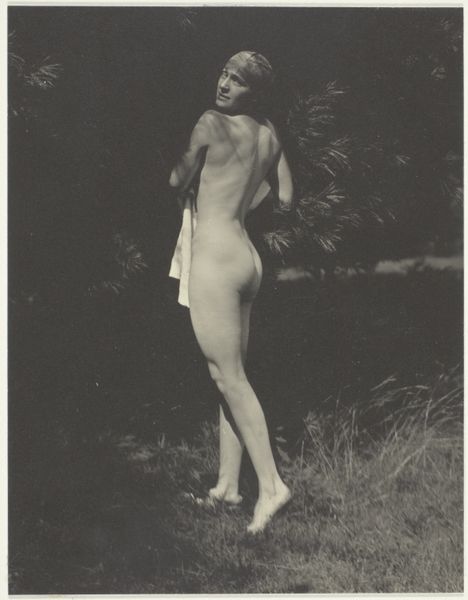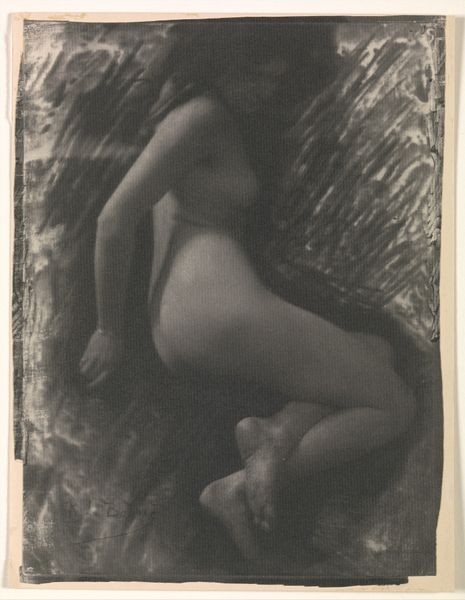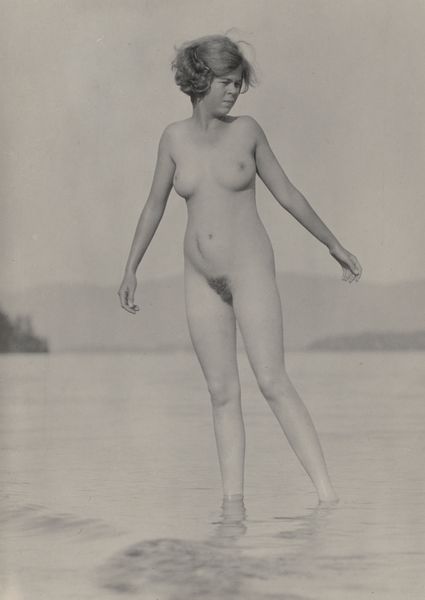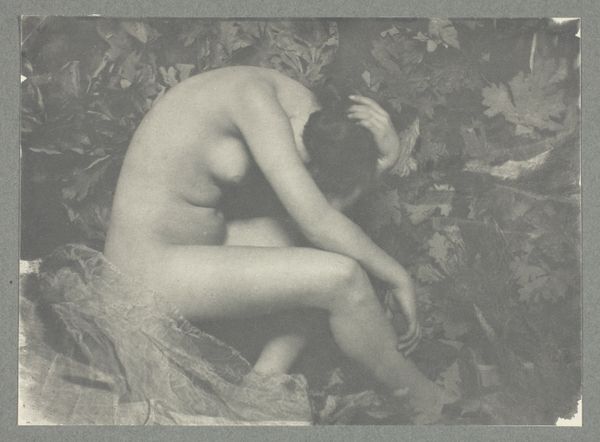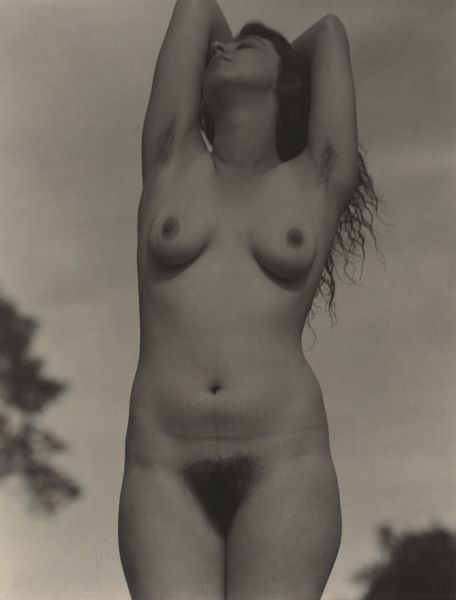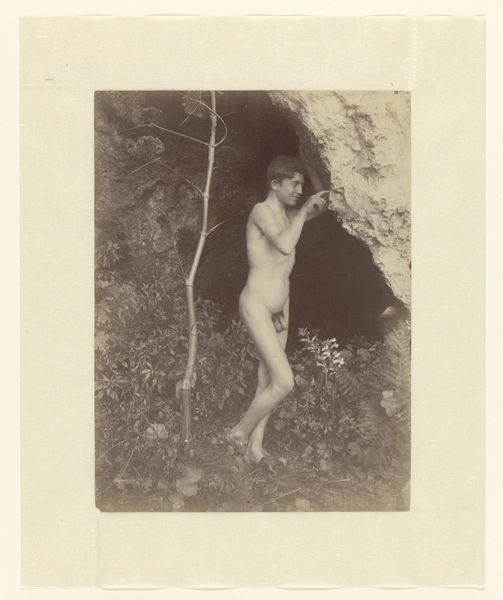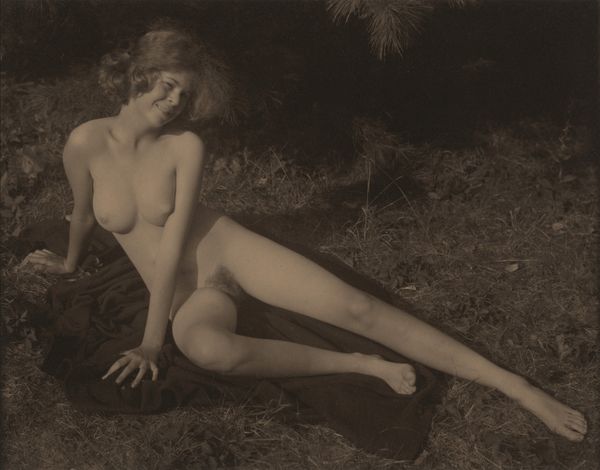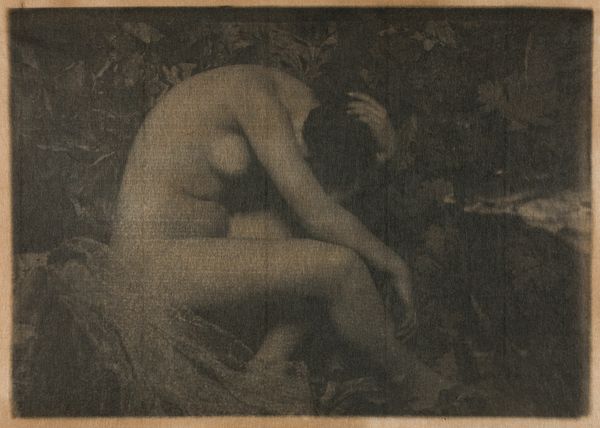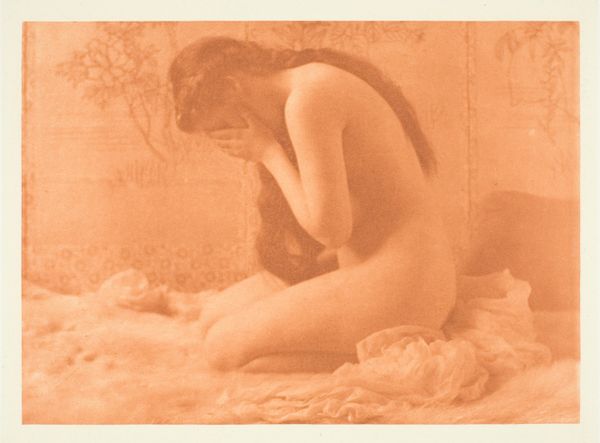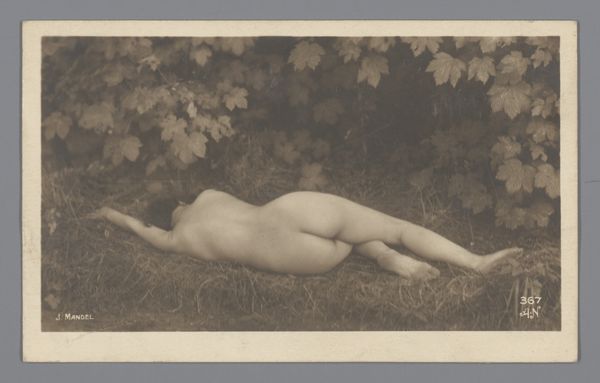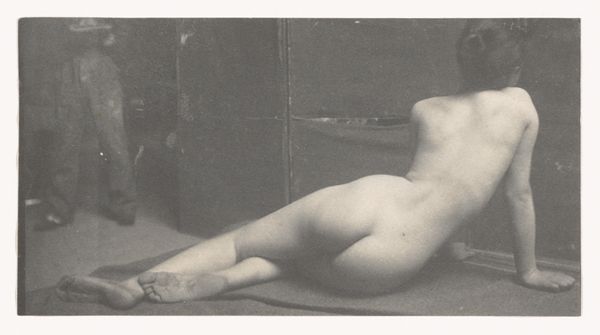
Copyright: Public domain
Editor: This is "Sand and Wild Roses" by Alice Boughton, created in 1909. It's a photograph, and I'm struck by how it blends the human figure with the natural landscape. It almost feels like she’s part of the environment. What do you see in this piece? Curator: What strikes me most is the interplay of materials and how that speaks to societal values. Look at the tactile nature of the sand, the rough textures of the flora contrasting with the smoothness of the skin. Consider how Boughton, working in Pictorialism, manipulated photographic processes to soften and ‘artify’ her images. This suggests a cultural desire to elevate photography to the level of high art by mimicking painting and challenging notions of art’s means of production. Editor: That's a great point. I hadn't considered the effort to make it seem less like a straightforward photograph. Was this also about a shifting role for women? Curator: Exactly! Women artists like Boughton were entering the art world, pushing boundaries. They often utilized ‘feminine’ subjects to access artistic spaces while quietly challenging conventional norms about gender, labor and artistic skill. Pictorialism allowed them an accepted channel, masking any perceived lack of craft by emphasizing "artistic" manipulation of the photographic print, it's fascinating when considered within a socio-economic frame. How was female labour considered, if it was artistic? Editor: It's like they had to make it not look easy, so it could be seen as art. This reframing, the art world and the female image feels a lot clearer now. Curator: Precisely, understanding art is about understanding its relationship to the tangible world, from the labor of the artist to the social function the final art object performs. It’s always grounded in the physical world.
Comments
No comments
Be the first to comment and join the conversation on the ultimate creative platform.
